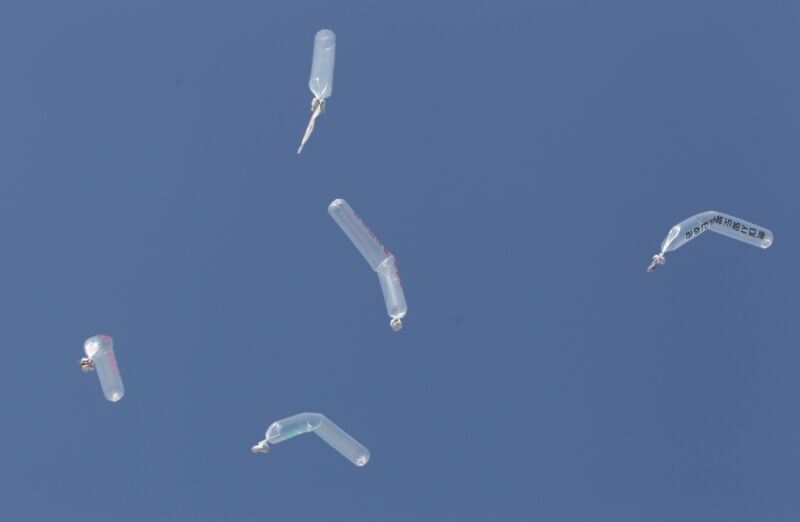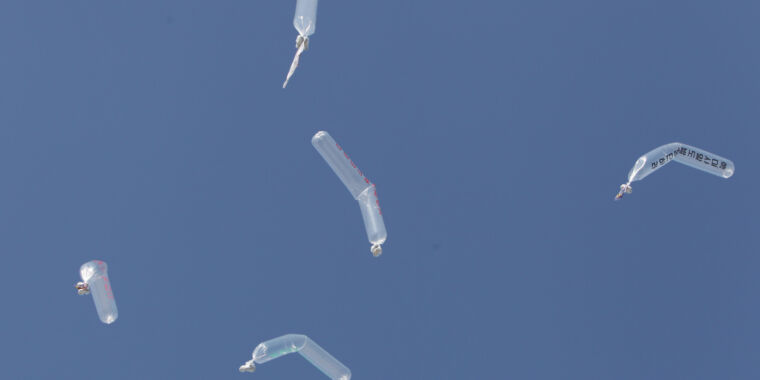
After an intense, detailed investigation, North Korea has determined what sparked an explosive outbreak of COVID-19 that has led to over 4.7 million “fevers” within its borders since late April. The culprit: “alien things” blown into the country from the South.
According to a report from the official KCNA news agency, North Korea’s outbreak began in early April when an 18-year-old soldier and a five-year-old kindergartener made contact with “alien things in a hill” in the area of Ipho-ri in Kumgang County, which is in the country’s southeastern corner near the border. The two later tested positive for the novel coronavirus, and epidemiological analyses found that those cases were solely behind the country-wide outbreak; the two infections link to greater spread in Kumgang and, from there, into the rest of North Korea.
“It was also ascertained,” the report reads, “that the fever cases reported in all areas and units of the country except the Ipho-ri area till mid-April, were due to other diseases.” The report did not include any information about how officials came to that conclusion.
The report also does not provide any hints about the identity of the “alien things” that allegedly triggered the country’s epidemic. But outside experts on the secretive, authoritarian country suggest that the report is merely an attempt to shift blame for the outbreak and invoke fear and hatred of South Korea. For decades, activists and North Korean defectors in South Korea have launched balloons loaded with leaflets, aid, and other items over the border.
North Korean officials have now issued guidance “stressing the need to vigilantly deal with alien things coming by wind and other climate phenomena and balloons in the areas along the demarcation line and borders.”
In terms of SARS-CoV-2 transmission risks, spread from contaminated objects or surfaces (called fomite transmission) is possible, but the risk is considered very low. Some studies have suggested that the chance of picking up a SARS-CoV-2 infection from a contaminated surface is less than 1 in 10,000. The primary way the virus spreads is via respiratory droplets between people who are in close proximity to each other.
North Korean officials aren’t the only ones in the region making dubious transmission claims. Last month, officials in the Chinese city of Dandong—which sits on the border with North Korea—suggested that wind blowing in from North Korea may explain the city’s steady stream of new infections. Though there’s no evidence to suggest that SARS-CoV-2 spreads via wind over long distances, officials advised residents living along the border to close their windows amid “southerly weather.”








